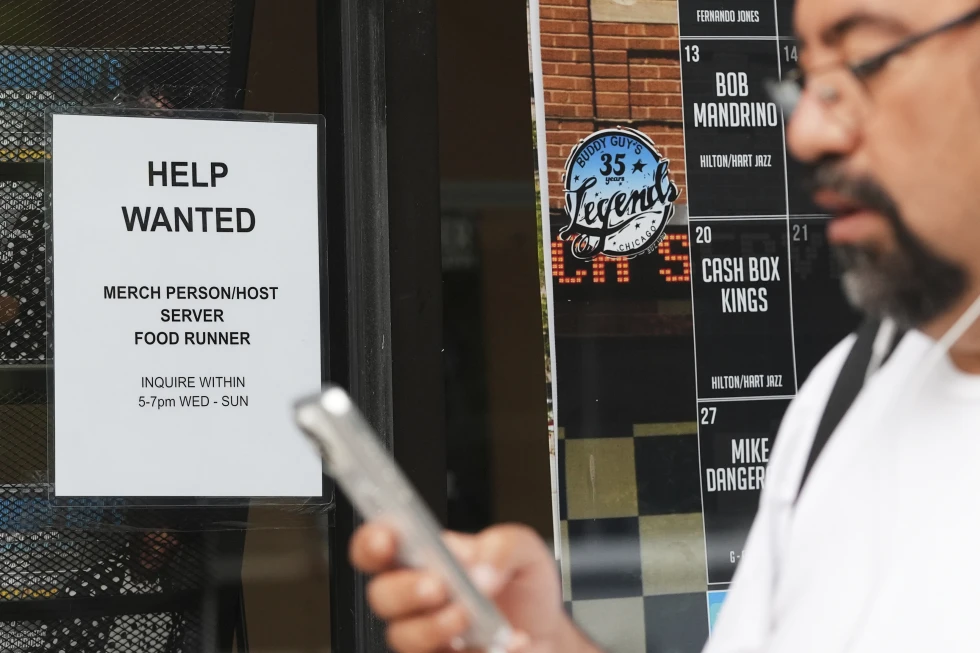Here’s the latest labor market update — downward revisions confirm a notable slowdown in job growth amid ongoing trade uncertainty driven by President Trump’s new tariffs:
📊 July Jobs Report: Market Cooling Evident
The U.S. economy added just 73,000 jobs during July 2025, significantly below forecasts (around 110,000–115,000) and marking the weakest gain so far this year. The unemployment rate edged up slightly to 4.2%, from 4.1% in June (AP News).
Additionally, prior months were revised downward by a combined 258,000 jobs, revealing that earlier estimates were overly optimistic (AP News).
⚖️ Trade War Fallout & Labor Weakness
Economists attribute the slowdown to multiple pressures:
- Tariffs impacting input costs and business confidence, dampening hiring intentions.
- Regulatory and migration shifts, including deportation policies reducing available labor supply.
- Aging demographics and fewer foreign workers entering due to stricter immigration enforcement (AP News, The Wall Street Journal).
Commentators describe the jobs market as in a “summer slowdown”—companies hesitant to hire but not letting go of existing workers—a “soft landing” rather than a collapse (AP News).
👥 Who’s Feeling the Slowdown?
- Young professionals (ages 22–27) face particularly tough conditions; their jobless rate has risen to 5.8%, the highest since 2012 (excluding pandemic years).
- Job gains are increasingly concentrated in healthcare and social assistance, which account for 63% of private-sector hiring in July (AP News).
📉 Economic & Labor Indicators Look Less Robust
- Job openings dropped to 7.4 million in June, down from 7.7 million in May, signaling continued cooling in labor demand (AP News).
- Unemployment claims remain low, with continued modest declines, but the slowdown in quits and hiring suggests a cautious labor market behavior (AP News).
🏦 What This Means for Fed Policy & Economic Outlook
| Area | Implication |
|---|---|
| Federal Reserve stance | Chair Powell is watching the unemployment rate closely; interest rates remain unchanged at 4.25–4.50%, with a possible cut only later in Q3 or October if the labor market further softens (MarketWatch, Reuters). |
| Sectoral risk | Manufacturing and other trade-exposed industries face rising cost pressures; a recent study estimates tariffs could raise factory costs by up to 4.5%, potentially reducing profits or prompting layoffs (AP News). |
| Consumer sentiment | Weak wage growth and job security uncertainty may suppress discretionary spending, slowing GDP growth—which was 1.2% in H1 2025, down from 2.5% in 2024 (The Guardian, AP News). |
✅ Summary Takeaways
- Employment growth in July was starkly below expectations—only 73,000 new jobs, with downward revisions wiping out earlier optimism.
- Unemployment rose to 4.2%, and job gains remain narrow in scope.
- Ongoing trade policy uncertainty, coupled with immigration changes and tariffs, contributed to a gradual labor market softening, particularly affecting young adults and manufacturing.
- The Fed remains cautious, holding rates steady while weighing signs of economic softening from trade-related disruptions.
Let me know if you’d like to break this down by region, industry (like tech or manufacturing), or dive deeper into Fed rate forecasts.
